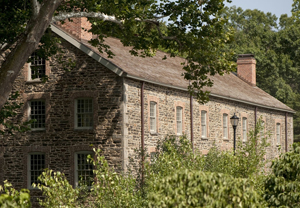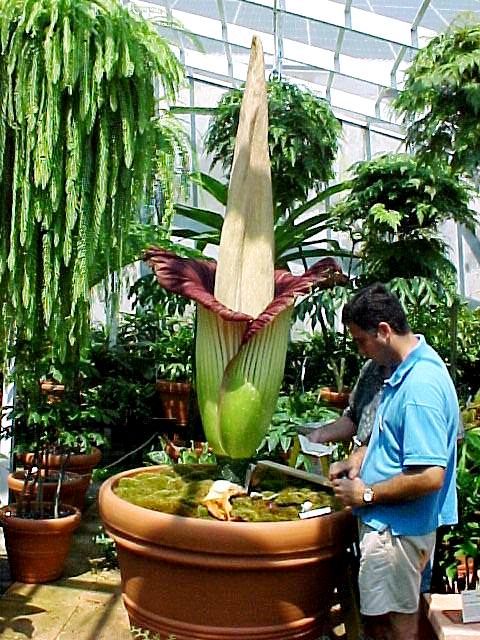|
Savory Of Crete
''Satureja thymbra'', commonly known as savory of Crete, whorled savory, pink savory, and Roman hyssop ( Arabic: ''za'atar rumi''; ''za'atar franji''), is a perennial-green dwarf shrub of the family Lamiaceae, having strongly scented leaves, native to Libya, southeastern Europe from Sardinia to Turkey; Crete, Cyprus, Lebanon, Israel (Palestine). The plant is noted for its dark-green leaves which grow on numerous, closely compacted branches, reaching a height of 20–50 cm. The plant bears pink to purple flowers that blossom between March and June. Habitat The semi-shrub grows mainly in Mediterranean woodlands and scrubland, adapting well to higher elevations, but also seen on rocky limestone gullies as an undergrowth, and alongside dirt roads. In Israel, the plant is commonly found in the Mount Carmel region, south of Haifa, as well as in the mountainous district of Upper Galilee, in Samaria and in the Judaean Mountains, thriving in areas where the soils are mainly terra ross ... [...More Info...] [...Related Items...] OR: [Wikipedia] [Google] [Baidu] |
Carl Linnaeus
Carl Linnaeus (23 May 1707 – 10 January 1778), also known after ennoblement in 1761 as Carl von Linné,#Blunt, Blunt (2004), p. 171. was a Swedish biologist and physician who formalised binomial nomenclature, the modern system of naming organisms. He is known as the "father of modern Taxonomy (biology), taxonomy". Many of his writings were in Latin; his name is rendered in Latin as and, after his 1761 ennoblement, as . Linnaeus was the son of a curate and was born in Råshult, in the countryside of Småland, southern Sweden. He received most of his higher education at Uppsala University and began giving lectures in botany there in 1730. He lived abroad between 1735 and 1738, where he studied and also published the first edition of his ' in the Netherlands. He then returned to Sweden where he became professor of medicine and botany at Uppsala. In the 1740s, he was sent on several journeys through Sweden to find and classify plants and animals. In the 1750s and 1760s, he co ... [...More Info...] [...Related Items...] OR: [Wikipedia] [Google] [Baidu] |
Terra Rossa (soil)
Terra rossa ( Italian for 'red soil') is a well-drained, reddish, clayey to silty soil with neutral pH conditions and is typical of the Mediterranean region. The reddish color of terra rossa is the result of the preferential formation of hematite over goethite. This soil type typically occurs as a discontinuous layer that ranges from a few centimeters to several meters in thickness that covers limestone and dolomite bedrock in karst regions. The high internal drainage and neutral pH conditions of terra rossa are a result of the karstic nature of the underlying limestone and dolomite.Torrent, J., 2005. ''Mediterranean soils.'' In: Hillel, D. (Ed.), ''Encyclopaedia of Soils in the Environment,'' vol. 2. Elsevier Academic Press, Oxford, pp. 418–427.Merino, E., Banerjee, A. and Dworkin, S., 2006. ''Dust, terra rossa, replacement, and karst: serendipitous geodynamics in the critical zone.'' ''Geochimica et Cosmochimica Acta,'' 70(18), p. A416.Vingiani, S., Di Iorio, E., Colombo, C. ... [...More Info...] [...Related Items...] OR: [Wikipedia] [Google] [Baidu] |
Thymol
Thymol (also known as 2-isopropyl-5-methylphenol, IPMP), , is a toxic monoterpenoid phenol derivative of ''p''-Cymene, isomeric with carvacrol. It occurs naturally in the oil of thyme, and it is extracted from ''Thymus vulgaris'' (common thyme), ajwain, and various other plants as a white crystalline substance of a pleasant aromatic odor and strong antiseptic properties. Thymol also provides the distinctive, strong flavor of the culinary herb thyme, also produced from ''T. vulgaris''. Thymol is only slightly soluble in water at neutral pH, but it is extremely soluble in alcohols and other organic solvents. It is also soluble in strongly alkaline aqueous solutions due to deprotonation of the phenol. Its dissociation constant ( p''K''a) is . Thymol absorbs maximum UV radiation at 274 nm. Chemical synthesis Thymol is produced by the alkylation of ''m''-cresol and propene: : A predicted method of biosynthesis of thymol in thyme and oregano begins with the cyclizati ... [...More Info...] [...Related Items...] OR: [Wikipedia] [Google] [Baidu] |
New York Botanical Garden Press
The New York Botanical Garden (NYBG) is a botanical garden at Bronx Park in the Bronx, New York City. Established in 1891, it is located on a site that contains a landscape with over one million living plants; the Enid A. Haupt Conservatory, a greenhouse containing several habitats; and the LuEsther T. Mertz Library, which contains one of the world's largest collections of botany-related texts. , over a million people visit the New York Botanical Garden annually. NYBG is also a major educational institution, teaching visitors about plant science, ecology, and healthful eating through NYBG's interactive programming. Nearly 90,000 of the annual visitors are children from underserved neighboring communities. An additional 3,000 are teachers from New York City's public school system participating in professional development programs that train them to teach science courses at all grade levels. NYBG operates one of the world's largest plant research and conservation programs. NYB ... [...More Info...] [...Related Items...] OR: [Wikipedia] [Google] [Baidu] |
Economic Botany
Economic botany is the study of the relationship between people (individuals and cultures) and plants. Economic botany intersects many fields including established disciplines such as agronomy, anthropology, archaeology, chemistry, economics, ethnobotany, ethnology, forestry, genetic resources, geography, geology, horticulture, medicine, microbiology, nutrition, pharmacognosy, and pharmacology. This link between botany and anthropology explores the ways humans use plants for food, medicines, and commerce. History In a 1958 essay at the conference that founded the Society for Economic Botany, David J. Rogers wrote, "A current viewpoint is that economic botany should concern itself with basic botanical, phytochemical and ethnological studies of plants known to be useful or those which may have potential uses so far underdeveloped. Economic botany is, then, a composite of those sciences working specifically with plants of importance to eople" Closely allied with economic botany is ... [...More Info...] [...Related Items...] OR: [Wikipedia] [Google] [Baidu] |
Carvacrol
Carvacrol, or cymophenol, C6H3(CH3)(OH)C3H7, is a monoterpene, monoterpenoid phenol. It has a characteristic pungent, warm odor of oregano. Natural occurrence Carvacrol is present in the essential oil of ''Origanum vulgare'' (oregano), oil of thyme, oil obtained from Lepidium, pepperwort, and Monarda fistulosa, wild bergamot. The essential oil of thyme subspecies contains between 5% and 75% of carvacrol, while ''Satureja'' (savory) subspecies have a content between 1% and 45%. ''Origanum majorana'' (marjoram) and Dittany of Crete are rich in carvacrol, 50% and 60–80% respectively. It is also found in tequila and ''Lippia graveolens'' (Mexican oregano) in the verbena family. Sources * ''Coleus amboinicus'' * ''Lavandula multifida'' * ''Lepidium * ''Lippia graveolens'' * ''Monarda didyma'' * ''Monarda fistulosa'' * ''Nigella sativa'' * ''Origanum compactum'' * ''Origanum dictamnus'' * ''Origanum majorana'' * ''Origanum microphyllum'' * ''Origanum minutiflorum'' * ''Origanum o ... [...More Info...] [...Related Items...] OR: [Wikipedia] [Google] [Baidu] |
Terpinene
The terpinenes are a group of isomeric hydrocarbons that are classified as monoterpenes. They each have the same molecular formula and carbon framework, but they differ in the position of carbon-carbon double bonds. α-Terpinene has been isolated from cardamom and marjoram oils, and from other natural sources. β-Terpinene has no known natural source but has been prepared from sabinene. γ-Terpinene and δ-terpinene (also known as terpinolene) have been isolated from a variety of plant sources. They are all colorless liquids with a turpentine-like odor. Production and uses α-Terpinene is produced industrially by acid-catalyzed rearrangement of α- pinene. It has perfume and flavoring properties but is mainly used to confer pleasant odor to industrial fluids. Hydrogenation gives the saturated derivative ''p''-menthane. Biosynthesis of α-terpinene The biosynthesis of α-terpinene and other terpenoids starts with the isomerization of geranyl pyrophosphate to linalyl py ... [...More Info...] [...Related Items...] OR: [Wikipedia] [Google] [Baidu] |
Bracts
In botany, a bract is a modified or specialized leaf, associated with a reproductive structure such as a flower, inflorescence axis or cone scale. Bracts are usually different from foliage leaves in size, color, shape or texture. They also look different from the parts of the flower, such as the petals or sepals. A plant having bracts is referred to as bracteate or bracteolate, while one that lacks them is referred to as ebracteate or ebracteolate. Variants Some bracts are brightly coloured which aid in the attraction of pollinators, either together with the perianth or instead of it. Examples of this type of bract include those of '' Euphorbia pulcherrima'' (poinsettia) and '' Bougainvillea'': both of these have large colourful bracts surrounding much smaller, less colourful flowers. In grasses, each floret (flower) is enclosed in a pair of papery bracts, called the lemma (lower bract) and palea (upper bract), while each spikelet (group of florets) has a further pair of ... [...More Info...] [...Related Items...] OR: [Wikipedia] [Google] [Baidu] |
Cyme (botany)
In botany, an inflorescence is a group or cluster of flowers arranged on a plant's stem that is composed of a main branch or a system of branches. An inflorescence is categorized on the basis of the arrangement of flowers on a main axis ( peduncle) and by the timing of its flowering (determinate and indeterminate). Morphologically, an inflorescence is the modified part of the shoot of seed plants where flowers are formed on the axis of a plant. The modifications can involve the length and the nature of the internodes and the phyllotaxis, as well as variations in the proportions, compressions, swellings, adnations, connations and reduction of main and secondary axes. One can also define an inflorescence as the reproductive portion of a plant that bears a cluster of flowers in a specific pattern. General characteristics Inflorescences are described by many different characteristics including how the flowers are arranged on the peduncle, the blooming order of the flowe ... [...More Info...] [...Related Items...] OR: [Wikipedia] [Google] [Baidu] |
Inflorescence
In botany, an inflorescence is a group or cluster of flowers arranged on a plant's Plant stem, stem that is composed of a main branch or a system of branches. An inflorescence is categorized on the basis of the arrangement of flowers on a main axis (Peduncle (botany), peduncle) and by the timing of its flowering (determinate and indeterminate). Morphology (biology), Morphologically, an inflorescence is the modified part of the Shoot (botany), shoot of spermatophyte, seed plants where flowers are formed on the axis of a plant. The modifications can involve the length and the nature of the internode (botany), internodes and the phyllotaxis, as well as variations in the proportions, compressions, swellings, adnations, connations and reduction of main and secondary axes. One can also define an inflorescence as the reproductive portion of a plant that bears a cluster of flowers in a specific pattern. General characteristics Inflorescences are described by many different charact ... [...More Info...] [...Related Items...] OR: [Wikipedia] [Google] [Baidu] |
Sessility (botany)
In botany, sessility (meaning "sitting", in the sense of "resting on the surface") is a characteristic of plant organs such as flowers or leaves that have no stalk. Plant parts can also be described as subsessile, that is, not completely sessile. A sessile flower is one that lacks a pedicel (botany), pedicel (flower stalk). A flower that is not sessile is Pedicel (botany), pedicellate. For example, the genus ''Trillium'' is partitioned into multiple subgenera, the sessile-flowered trilliums (Trillium#Subgenus Sessilia, ''Trillium'' subgen. ''Sessilia'') and the pedicellate-flowered trilliums. The term "sessility" is also used in mycology to describe a fungal sporocarp (fungi), fruit body that is attached to or seated directly on the surface of the substrate (biology), substrate, lacking a supporting stipe (mycology), stipe or pedicel (botany), pedicel. References Plant morphology Fungal morphology and anatomy {{plant-morphology-stub ... [...More Info...] [...Related Items...] OR: [Wikipedia] [Google] [Baidu] |


